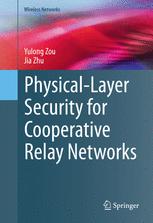Physical Layer Security in Random Cellular Networks 1st Edition by Hui Ming Wang,Tong Xing Zheng 9811015740 9789811015748
$50.00 Original price was: $50.00.$25.00Current price is: $25.00.
Physical Layer Security in Random Cellular Networks 1st Edition by Hui Ming Wang,Tong Xing Zheng – Ebook PDF Instant Download/Delivery:9811015740,9789811015748
Full download Physical Layer Security in Random Cellular Networks 1st Edition after payment
Product details:
ISBN 10: 9811015740
ISBN 13: 9789811015748
Author:Hui Ming Wang,Tong Xing Zheng
This book investigates key security issues in connection with the physical layer for random wireless cellular networks. It first introduces readers to the fundamentals of information theoretic security in the physical layer. By examining recently introduced security techniques for wireless point-to-point communications, the book proposes new solutions to physical layer security based on stochastic geometric frameworks for random cellular networks. It subsequently elaborates on physical-layer security in multi-tier heterogeneous networks. With the new modeled settings, the authors also verify the security performance with the impact of the full-duplex transceivers. The specific model design presented here offers a valuable point of reference for readers in related areas. In addition, the book highlights promising topics and proposes potential future research directions.
Physical Layer Security in Random Cellular Networks 1st Table of contents:
1 Wireless Physical Layer Security
1.1 Information-Theoretic Security
1.1.1 Encryption
1.1.2 Physical Layer Security
1.2 Fundamentals of Information-Theoretic Security
1.2.1 Shannon’s Perfect Secrecy
1.2.2 Wyner’s Secrecy Conditions
1.3 Secrecy Metrics
1.3.1 Secrecy Capacity/Rate
1.3.2 Ergodic Secrecy Capacity/Rate
1.3.3 Secrecy Outage/Throughput
1.3.4 Wyner’s Wiretap Code
1.4 Existing Techniques in Physical Layer Security
1.4.1 MIMO
1.4.2 Node Cooperation
1.4.3 Full-Duplex Transceiver
1.5 Summary
References
2 Random Cellular Networks and Stochastic Geometry
2.1 Deployment of Cellular Networks
2.1.1 Modeling and Analyzing Random Cellular Networks
2.1.2 Stochastic Geometry Approach
2.2 Fundamentals of Stochastic Geometry
2.2.1 Point Process
2.2.2 Poisson Point Process
2.3 Using Stochastic Geometry to Model Wireless Networks
2.3.1 Cellular Networks
2.3.2 Heterogeneous Cellular Networks
2.3.3 Wireless Ad hoc Networks
2.4 Interference Characterization
2.5 Physical Layer Security in Random Cellular Networks
2.5.1 Connection Outage and Secrecy Outage
2.5.2 Secrecy Throughput
2.5.3 Network-Wide Secrecy Throughput
2.5.4 A Brief Survey on Physical Layer Security in Wireless Networks
References
3 Physical Layer Security in Cellular Networks Under TDMA
3.1 Introduction
3.2 System Model
3.2.1 AN-Aided Secrecy Signaling
3.2.2 On–Off Secrecy Transmission Strategy
3.3 Secrecy Outage Probability Minimization
3.4 Secrecy Throughput Maximization
3.4.1 Dynamic Parameter Transmission Scheme
3.4.2 Static Parameter Transmission Scheme
3.5 Simulations
3.5.1 Outage-Optimal Power Allocation
3.5.2 Secrecy Throughput Optimization for DPTS and SPTS
3.5.3 Comparison Between DPTS and SPTS
3.6 Conclusions
References
4 Physical Layer Security in Heterogeneous Cellular Network
4.1 Introduction
4.2 System Model
4.2.1 Cellular Deployment and Channel Model
4.2.2 Secure Transmission Signaling
4.2.3 Secrecy Mobile Association Policy
4.3 Secrecy Performance Analysis
4.3.1 User Connection Probability
4.3.2 User Secrecy Probability
4.3.3 Network Secrecy Throughput
4.3.4 Average User Secrecy Throughput
4.4 Conclusions
References
5 Physical Layer Security in Heterogeneous Ad hoc Networks with Full-Duplex Receivers
5.1 Introduction
5.2 System Model
5.2.1 Heterogeneous Ad hoc Networks
5.2.2 Signal Model
5.2.3 Performance Metrics
5.3 Single-Antenna-Jamming FD Receiver
5.3.1 Connection Probability
5.3.2 Secrecy Outage Probability
5.3.3 Network-Wide Secrecy Throughput
5.4 Multi-antenna Jamming FD Receiver
5.4.1 Connection Probability
5.4.2 Secrecy Outage Probability
5.4.3 Network-Wide Secrecy Throughput
5.5 Conclusions
References
6 Conclusions and Future Research Directions
6.1 Conclusions
6.2 Future Research Directions
People also search for Physical Layer Security in Random Cellular Networks 1st :
physical layer security techniques
the physical layout of a lan is called its topology
physical network separation
physical network layer of cyberspace
layered physical security model
physical network segmentation
Tags:
Hui Ming Wang,Tong Xing Zheng,Security,Physical,Cellular
You may also like…
Engineering - Telecommunications
5G Physical Layer Technologies (IEEE Press) 1st Edition Abu-Rgheff
Engineering - Telecommunications
Location-Based Services in Cellular Networks: from GSM to 5G NR García
Computers - Programming
Computers - Networking













